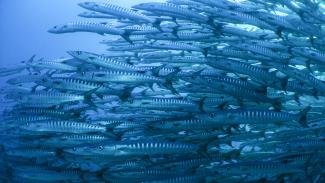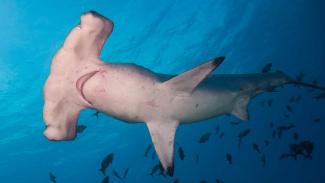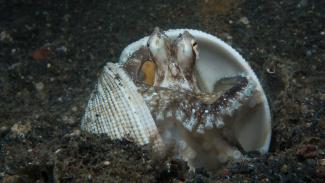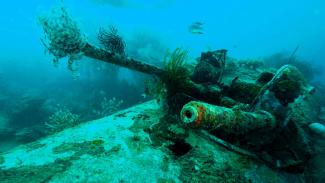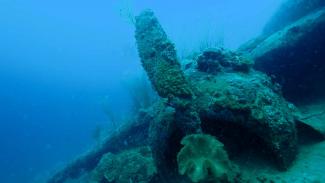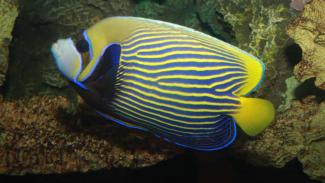
Around 40km off the east coast of Peninsular Malaysia, not far from Singapore is the picturesque island of Tioman.
A popular holiday resort for Malaysians & Singaporeans, the steep-sided jungle clad slopes of the island rise straight out the water and smaller islets dot the coastline, making for a spectacular tropical dive spot.
A little to the south is the tiny island of Aur, which while difficult to reach, has good diving.
Highlights
Best diving spots
Underwater, Tioman's best sites are off the north-west coast. The islets of Labas & Tulai offer good diving, with plenty of soft coral & the chance to see Nurse Sharks, Napoleon Wrasse, & Turtles.
Tiger Reef is a submerged pinnacle that is only suitable for more experienced divers, who are rewarded with stunning soft corals, healthy reef-life and a good chance of big fish encounters.
Closer to Tioman, Labas Island has many swim-throughs and makes for an interesting, enjoyable dive, while Soyak has a small wreck that is home to Lionfish & Banded Sea-Kraits, plus a nice fringing reef.
Large Turtles, Giant Morays, Bumphead Parrotfish & Cuttlefish are frequently seen around Tioman’s dive sites. Blacktip Reef Sharks & Nurse Sharks are seen too, with Whale Sharks making very occasional appearances. The best spot for big fish encounters is Magician’s Rock to the north - although the site can only be dived in perfect conditions.
To the south, Palau Aur is another popular dive spot. It normally has better visibility & healthier reefs than Tioman as it is a little further from the mainland, but is more difficult to reach. There is accommodation here, but currently no dive resort.
There is good diving off the south coast of Aur around Pulau Pinang, where Stingrays, Batfish, Napoleon Wrasse & large Groupers can be seen. A little south, three deep pinnacles have Barracuda, Napoeon Wrasse, schools of Snapper & Fusliers & Whitetip sightings.
Dayang & Lang to the north probably have Aur's best diving. At Raynor's Rock, a family of Bumphead Parrotfish munch their way noisily around the reef, while Captain's Point is a great drift-dive with plenty of big fish encounters. Healthy populations of reef-life call this area home and there is a chance to see Eagle Rays, Manta Rays or even the odd Whale Shark - especially between October & November.
When to dive
Tioman is best dived between April and October.
Getting there
Tioman can be reached by ferry from Mersing on the mainland. There are regular trips in the high season, between April & October, but a very limited service outside these months. It's also possible to fly to the island by small plane from both Singapore & Kuala Lumpur.
Activities
Away from the reefs, day trips & snorkelling to nearby islands are popular, including trips to the beautiful Joara beach on the other side of the island. For the more ambitious, it is possible to arrange jungle trekking and rock climbing. Nightlife on the island tends to be limited to a few restaurants.
Resort and liveaboard options
There is a wide range of accommodation on the island. The beaches to the north of the island tend to cater for budget travellers, while to the south, mid and high range resorts can be found. Some of the more exclusive resorts are a little difficult to reach, so it is best to book in advance.


